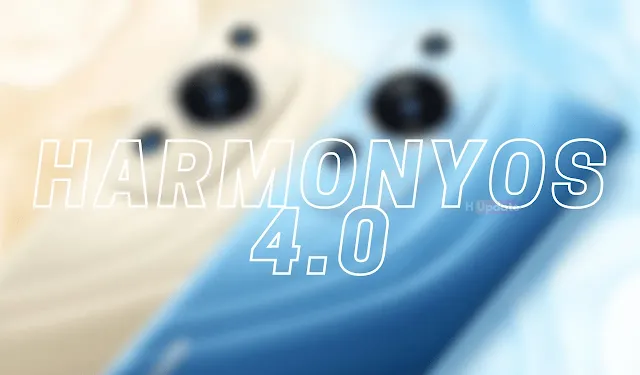In the ever-evolving landscape of technology, software updates bring new functionalities and enhancements that can significantly impact user experiences. HarmonyOS 4.0, the latest iteration of Huawei's cross-device operating system, has made a striking entrance with a host of innovative features, among which the Live Window feature stands out prominently. This article delves into the technical details of HarmonyOS 4.0's Live Window, its inspiration from iOS and AOSP, and its implications for future Huawei devices.
The Genesis of HarmonyOS 4.0's Live Window
A notable addition to HarmonyOS 4.0 is the Live Window feature, a dynamic and animated element reminiscent of iOS's Live Widgets. This feature manifests as an animated pill positioned at the top or top corner of a device's screen. As users interact with various functions like recordings and countdowns, the Live Window expands, displaying relevant information and updates. This addition presents a departure from traditional static widgets, introducing a more engaging and interactive dimension to the user interface.
The Influence of iOS and AOSP on HarmonyOS 4.0
While HarmonyOS 4.0's Live Window brings a fresh perspective to Huawei's interface, it is intriguingly reminiscent of certain aspects of iOS and AOSP. The similarities between HarmonyOS 4.0 and AOSP 12 at their core suggest a certain degree of shared technological DNA. However, the most conspicuous source of inspiration for HarmonyOS 4.0's user interface comes from Apple's iOS.
The introduction of Live Window draws a clear parallel with iOS's Dynamic Widgets, particularly Apple's Dynamic Island feature present in iOS 14. Live Window's capacity to expand and display various elements, such as countdown timers and screen recordings, echoes the dynamic and real-time nature of iOS's widgets. This subtle homage to iOS underscores the cross-pollination of design philosophies within the tech industry.
Ark Engine: Powering HarmonyOS 4.0's Animations
One of the key driving forces behind the captivating animations of HarmonyOS 4.0's Live Window is the Ark Engine. This engine can be likened to OxygenOS/ColorOS 13's Dynamic Computing Engine, as it optimizes the performance and fluidity of animations within the operating system. The Ark Engine empowers Live Window to seamlessly expand and contract, enhancing the overall user experience and imbuing the interface with a sense of vitality.
Device Compatibility and Future Prospects
HarmonyOS 4.0's Live Window is not confined to specific device categories; rather, it adapts to various form factors. The feature strategically avoids obstructing a device's selfie camera, ensuring compatibility with devices such as smartphones and tablets. Devices as recent as the 2021 MatePad Pro series, and even older smartphones like the Nova 6, Mate 30, or P40 series, can leverage the Live Window feature.
The strategic design considerations that allow Live Window to avoid the selfie camera's field of view hint at the feature's potential expansion to Huawei TVs. The seamless adaptability of Live Window across device types underscores Huawei's commitment to a unified and versatile user experience.
HarmonyOS 4.0 and the Mate 60 Series: A Glimpse into the Future
HarmonyOS 4.0's introduction of the Live Window feature could serve as a harbinger of more comprehensive and interactive functionality in the upcoming Mate 60 series. The active and expanding nature of Live Window aligns with the direction of user interface trends, where elements are becoming increasingly dynamic and responsive.
Super Transit Station: Bridging the Gap
Another noteworthy enhancement within HarmonyOS 4.0 is the Super Transit Station. This feature serves as a unified hub for seamlessly transferring text and images from one app to another. Its implementation involves a specific two-finger gesture, streamlining the process of sharing content between applications. This feature addresses a common pain point in multitasking and content sharing, enhancing overall productivity and user convenience.
Contact Posters: A Creative Approach to Customization
HarmonyOS 4.0 introduces Contact Posters, a creative and innovative take on personalization. This feature allows users to convert any photo into a dynamic wallpaper for compatible devices. While seemingly a small addition, Contact Posters exemplify HarmonyOS 4.0's commitment to user-centric customization and design.
Conclusion
HarmonyOS 4.0's Live Window feature, drawing inspiration from iOS and AOSP, represents a pivotal step in Huawei's ongoing efforts to redefine user experiences across its ecosystem. The dynamic and interactive nature of Live Window, empowered by the Ark Engine, exemplifies the convergence of aesthetics and functionality. As HarmonyOS continues to evolve, its features like Super Transit Station and Contact Posters highlight the brand's dedication to innovation and user-centric design. While HarmonyOS 4.0's Live Window pays homage to iOS's Dynamic Island, it forges a distinctive path forward, hinting at a future where Huawei devices seamlessly blend hardware and software, form, and function.

